A grave reminder: Refurbished cemetery does honor to those remembered there
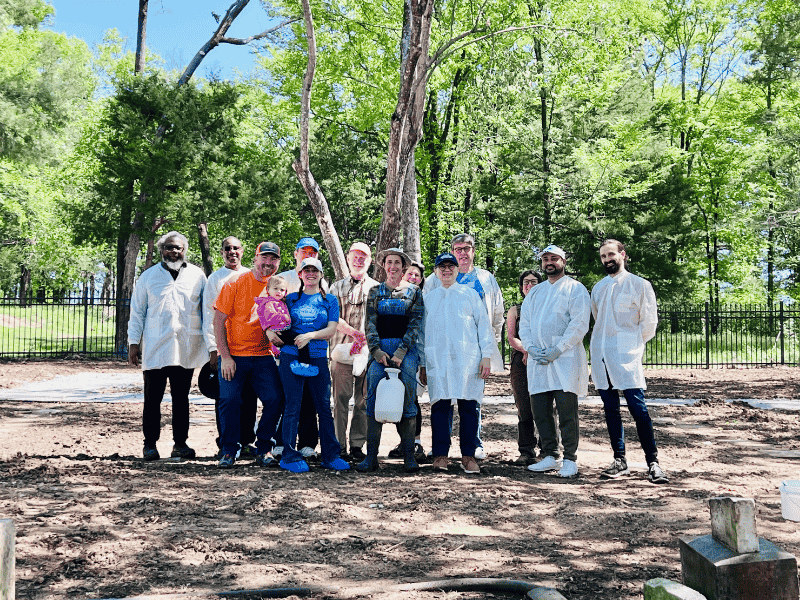
When Jena Lynch of Vicksburg visited the cemetery in April, she didn’t know it had just been given new life.
She didn’t know that many of the shrubs growing there were fresh, that the grass pressing through the sod was young, that the asphalt layer at the entrance was practically pristine, or that gravestones and markers shone brighter and cleaner than they had for some time.
But she did know that her late grandmother was among the many people memorialized there at the University of Mississippi Medical Center Cemetery and that the well-tended grounds do them justice.
“All of it shows respect – the cemetery, the memorial ceremony,” she said. “I had never been to UMMC before; it was an eye-opener.”
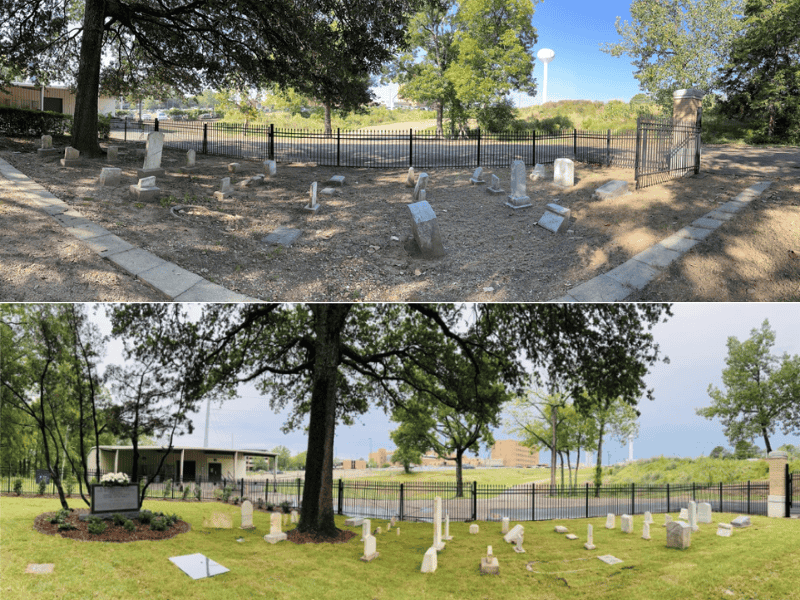
In keeping with an annual tradition, the April 23 Ceremony of Thanksgiving for Anatomical Donors acknowledged those who have donated their bodies to science at the Medical Center and whose remains, in many cases, lie in the cemetery; the cause for its upkeep recently galvanized many of those who work at UMMC.
Several days before the ceremony was scheduled to take place at the UMMC Cemetery, their work at the site was done.
As it happened, the threat of rain forced the observance indoors, but the improved grounds are ready for many ceremonies to come and for visits from loved ones during the in-between times.
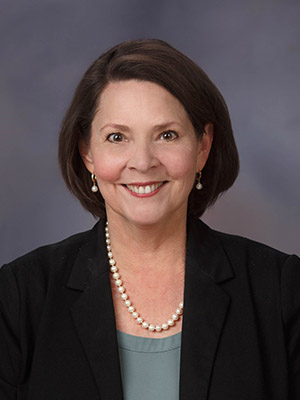
“It’s a beautiful site on our campus.” said Lida Key, director of the UMMC Museum of Medical History and one of those who helped groom the grounds. “Honoring the anatomical donors there is something we do, and should do, every year there.
“It was an honor to help out that day. I was surprised at how emotional it was, at the connection you feel when you’re there. It was a meaningful day, and it underlined how important the anatomical donors are.”
Those who donate their bodies through the Anatomical Gift Program do so for research and to teach students, who often refer to the donors as their “first patients.”
Afterward, the donors’ remains are cremated and sent to their families, or they stay at the Medical Center and are kept in the cemetery, a tree-sheltered sanctuary in the campus’ northeastern end.
Since 2022, faculty members in the UMMC Department of Advanced Biomedical Education have participated in the burial of the cremains – which had been the responsibility of the campus grounds crew.
Moreover, Dr. Norma Ojeda, chair of advanced biomedical education, took an extra step to remember the donors by organizing a non-denominational memorial service held at the cemetery late in the year. It’s attended by a UMMC chaplain, DABE faculty members and PhD students in clinical anatomy.
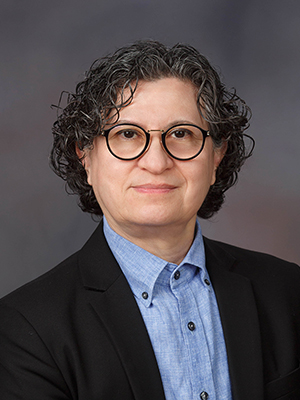
“I wanted us to do a little bit more, to close the whole cycle in a respectful manner,” Ojeda said, “and let the faculty members, in their personal way, give thanks to the donors for helping them teach the students.
“We want to treat these patients and their families with honor. The body donors are teaching our students to show compassion, responsibility and respect – when no one else is looking.”
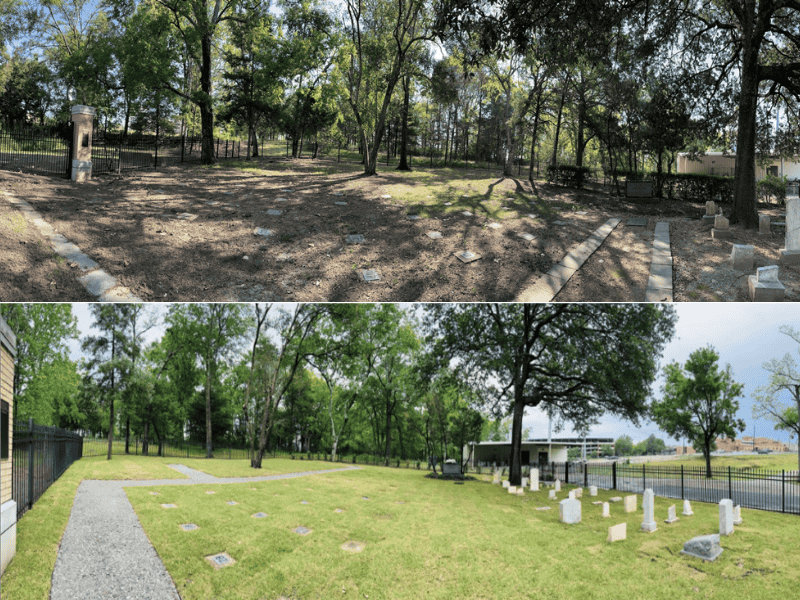
The Ceremony of Thanksgiving is meant to show respect to the donor families as well. Last year, long before the 2025 service was to happen, a DABE faculty member, Dr. Edgar Meyer, proposed that the Medical Center give the cemetery a new coat of respectfulness.
Meyer put the idea to Ojeda in his roles as an assistant professor of advanced biomedical education and a leader of the DABE’s Committee for Community and Collaboration, an instrument of community outreach.
In turn, Ojeda got approval from Dr. LouAnn Woodward, vice chancellor for health affairs, and the beautification began.
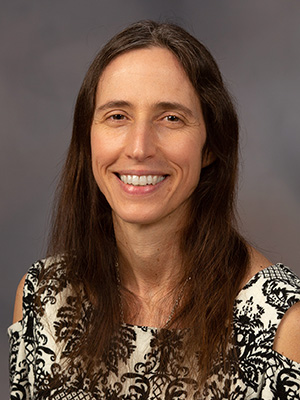
Dr. Jennifer Mack, lead bioarchaeologist for the Asylum Hill Project, was one of the institutional leaders or managers who coordinated the work – particularly when it came to cleaning gravestones with the same stain remover that “keeps the White House white,” she said.
The substance, D/2 Biological Solution, provided the face-lifts. “It’s recommended by the National Park Service,” Mack said.
“It’s non-toxic and biodegradable. You apply the solution with sprayer, scrub and rinse. It will discourage the growth of algae, mold and mildew on the gravestones for at least a couple of years.”
Under Mack’s guidance, volunteers set aside a good part of a Saturday – April 12 – and cleaned about 35 headstones and footstones. Names on the stones are at least partly legible. They were linked to the long-shuttered State Hospital for the Insane, which had opened in 1855 as the Mississippi State Lunatic Asylum on what became Medical Center land.
They were among those discovered on the UMMC campus in 1990 and had been moved from the Old Asylum Cemetery area. Today, you can read the names found on these surviving stones, listed on a plaque at the UMMC Cemetery.
In 1992, workers digging a ditch for a new laundry’s steam line connection exposed 44 unmarked graves. The late Dr. Wallace Conerly, vice chancellor at the time, called for the creation of the UMMC Cemetery, which also now holds those graves’ remains; they lie under numbered markers that were also showing their age.
A Vicksburg company, Old River Cemetery Restoration, handled the grave marker work of restoration and resetting, Mack said.
The gravestone and marker work was just part of the cemetery cleanup. Separately, grounds crew members led by Charles D. Craft, facilities manager-grounds, and Larry H. Lineberry, associate director of facilities management services, were in charge of cutting dead trees, planting or relocating shrubs and grass, and smartening up the asphalt layer at the cemetery entrance.
“I’m grateful for Dr. Ojeda’s initiative,” Mack said. “I’m happy to have had the opportunity to help make the cemetery look good for the families who are going to be visiting their loved ones there.”
Lynch and her sister, Dana Long of Hernando, were among the most recent visitors. After the April 23 memorial service, held in the Student Union, they made the short trip to the UMMC Cemetery and remembered their 101-year-old grandmother, Willie Frances Greer, amid the refurbished gravestones.


